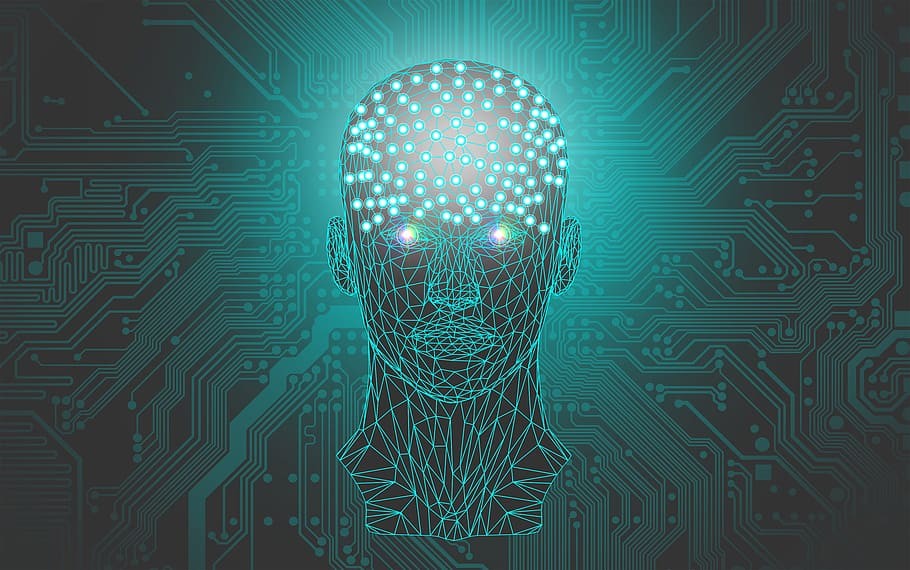At the dawn of the twentieth century, physics was undergoing a transformation unlike any it had ever seen. Old certainties were crumbling, replaced by revelations so strange they seemed to belong to science fiction. Among these revolutions, one idea whispered with a peculiar allure: the possibility that even in absolute emptiness, in the silence of the vacuum, energy never truly disappears. This idea, which would later be known as zero-point energy, emerged as a startling reminder that nature holds mysteries far deeper than human intuition.
The story begins with the rise of quantum mechanics, a field born from the struggles of physicists to explain the behavior of atoms and radiation. At the heart of the early quantum revolution was Max Planck, a German physicist who, in 1900, introduced the concept of the quantum. He proposed that energy is not continuous, like a smooth flowing river, but comes in discrete packets he called “quanta.” This idea shattered classical physics and laid the foundation for an entirely new way of seeing the universe.
As Planck wrestled with the strange new world he had uncovered, he stumbled upon something even more radical. He realized that according to his equations, an oscillator—a system vibrating at a specific frequency—would never quite lose all its energy, even at absolute zero, the coldest temperature imaginable. Instead, it would always retain a tiny residue of energy. This irreducible remnant, he argued, was not an accident of mathematics but a fundamental property of nature.
Thus was born the concept of zero-point energy, the lowest possible energy state of a system. It was an unsettling thought: the universe is never truly at rest. Even in perfect emptiness, something stirs.
What Lies Beneath Nothingness
To the human imagination, a vacuum has always represented absence—the void, the nothing. But quantum mechanics revealed that the vacuum is not empty at all. Instead, it is a seething ocean of fluctuations, an invisible field of restless activity.
The key lies in a principle known as the Heisenberg uncertainty principle. Werner Heisenberg, one of the founders of quantum mechanics, showed that there is a limit to how precisely we can know certain pairs of quantities, such as position and momentum, or energy and time. This uncertainty implies that particles and fields cannot ever be completely still; they must fluctuate, jitter, and dance, even when stripped of all external energy.
Zero-point energy is this irreducible jitter of existence. Imagine trying to freeze the motion of every atom in a block of matter, cooling it down to absolute zero. Classical physics would say that once all heat energy is removed, the atoms would sit perfectly still, like statues in a crystalline lattice. Quantum physics, however, insists otherwise. The atoms will continue to vibrate faintly, refusing to be perfectly at rest. This is not a flaw of our experiments but a fundamental law of reality.
At the cosmic level, the vacuum of space itself is not truly empty. Quantum fields permeate the universe, and even in their lowest state, they bubble with fluctuations. These tiny flickers can briefly summon particles into existence—particle-antiparticle pairs that wink into being and vanish almost instantly. Though fleeting, these “virtual particles” are real enough to leave measurable effects. They remind us that the void is not absence but presence of the deepest kind.
From Theory to Reality
For decades, zero-point energy remained a curious mathematical artifact, a strange prediction of quantum theory. But slowly, evidence began to mount that this subtle energy was more than a theoretical quirk.
One of the most striking proofs came in 1948, when Dutch physicist Hendrik Casimir predicted a peculiar phenomenon. He argued that if two uncharged, perfectly conducting plates were placed very close together in a vacuum, the zero-point fluctuations of the electromagnetic field would create a measurable force pushing the plates together. This counterintuitive effect, now known as the Casimir effect, was later observed experimentally. It provided direct evidence that the vacuum is not empty but brimming with fluctuating energy.
Further demonstrations came from spectroscopy and experiments on low-temperature systems. The vibrational energies of molecules, even at absolute zero, revealed that something always remained, as Planck had suggested. Zero-point motion was no longer just an elegant equation; it was an experimentally confirmed property of matter and fields.
These discoveries deepened the mystery. If the vacuum truly contained an enormous sea of energy, what role did it play in the universe? Could it be tapped, harnessed, or understood as the hidden engine of cosmic processes?
The Vacuum and the Cosmos
Zero-point energy does not only haunt the microscopic world. It has profound implications for the universe as a whole. Cosmologists realized that if the vacuum is filled with quantum fluctuations, then this vacuum energy must exert an effect on the fabric of space-time.
Einstein’s equations of general relativity allowed for such a possibility. In 1917, he introduced the concept of the cosmological constant, a term representing a kind of repulsive energy pervading space. At the time, Einstein used it reluctantly, as a mathematical trick to allow for a static universe. Later, when evidence showed that the universe was expanding, he called it his “greatest blunder.” But the idea refused to die.
In the late twentieth century, observations of distant supernovae revealed that the expansion of the universe is accelerating. Something is pushing galaxies apart, acting as a mysterious anti-gravity. The best explanation we have is that the vacuum itself exerts this repulsive pressure. Cosmologists now speak of dark energy, a force driving the acceleration of the cosmos, and many suspect it is intimately tied to the zero-point energy of quantum fields.
Here lies a staggering paradox. Theoretical estimates of the vacuum energy from quantum mechanics predict a value that is absurdly, catastrophically large—up to 120 orders of magnitude greater than what is observed. Yet in reality, the effect we see in cosmic acceleration is small but undeniable. This discrepancy is one of the greatest puzzles in modern physics, known as the cosmological constant problem. It suggests that our understanding of zero-point energy is both tantalizingly close and maddeningly incomplete.
Dreams of Power
The notion that the vacuum contains energy has fueled dreams of limitless power. If zero-point energy pervades the universe, might humanity one day learn to extract it, tapping an inexhaustible reservoir to power civilizations for eternity?
Speculative visions abound. Imagine spacecraft sailing through the cosmos, fueled not by chemical engines but by the energy of the vacuum itself. Imagine a world free of fossil fuels, powered by the silent heartbeat of the universe.
But between dream and reality lies a vast gulf. To date, no one has found a practical way to extract usable energy from the vacuum. Quantum mechanics insists that zero-point energy cannot be eliminated or drained in the ordinary sense—it is a baseline, the lowest possible state. To “harvest” it would mean somehow digging beneath the floor of reality itself.
Nonetheless, the allure remains. Engineers and visionaries sometimes propose devices that claim to exploit zero-point energy, though such claims rarely withstand scientific scrutiny. The dream persists because zero-point energy embodies an almost spiritual promise: that even in emptiness, abundance waits.
The Human Fascination with Nothingness
Part of the magic of zero-point energy lies not only in its physics but in its philosophy. To contemplate that the vacuum is alive with invisible motion is to confront a profound paradox: nothingness is not nothing. The void is fertile, humming, restless.
This idea resonates with ancient philosophies. In Taoist thought, emptiness is the source of creation; in Hindu philosophy, the unmanifest Brahman gives rise to the manifest universe. Zero-point energy, in a strange way, mirrors these mystical traditions. It tells us that the ground of reality is not barren but vibrantly full.
Einstein himself was captivated by this sense of mystery. Though he resisted aspects of quantum mechanics, particularly its indeterminacy, he acknowledged that nature’s depths were stranger than our boldest imaginations. To him, uncovering the secrets of the universe was not merely about equations but about touching the mind of God.
Zero-point energy embodies this spirit. It is a reminder that what we see—stars, galaxies, matter—is only part of the story. Beneath the visible lies an invisible sea, vast and inexhaustible, shaping the cosmos in ways we barely understand.
The Frontier of Science
Today, zero-point energy remains at the frontier of physics. It challenges scientists to reconcile the quantum world with the gravitational fabric of space-time. It forces us to confront the cosmological constant problem, a riddle that may require entirely new frameworks of understanding.
Some physicists explore the possibility that vacuum fluctuations played a role in the birth of the universe, driving cosmic inflation in the earliest moments of time. Others probe how zero-point energy interacts with quantum fields to shape fundamental forces. In laboratories, researchers study ultra-cold systems and nanostructures to measure Casimir forces with exquisite precision, testing our grasp of vacuum physics at the smallest scales.
Meanwhile, theorists dream of new breakthroughs that may one day explain why vacuum energy appears so small in our universe yet looms so large in our equations. Perhaps the answer lies in hidden symmetries, extra dimensions, or new principles of physics that remain beyond our reach.
A Silent Symphony
What, then, is zero-point energy? It is the silent symphony beneath creation, the faint yet eternal hum that pervades existence. It is the reminder that even where nothing seems to be, everything already is.
For science, it is a challenge—a paradox that both affirms the triumph of quantum mechanics and points to mysteries unresolved. For philosophy, it is a revelation—that emptiness is an illusion, and that beneath silence lies song. For humanity, it is a dream—that in the depths of the vacuum may rest the key to understanding the universe and perhaps shaping our future.
We live in a universe where the stars burn, galaxies spin, and life emerges from dust. Yet all of this floats on a sea of energy invisible and inexhaustible. To know zero-point energy is to glimpse the hidden engine of reality, to recognize that the cosmos is never still, never empty, but forever alive with the breath of creation.
And as long as humanity continues to wonder, to imagine, to reach beyond what seems possible, the mystery of zero-point energy will remain not just a scientific concept but a beacon—a whisper from the void, calling us to listen more deeply to the heartbeat of the universe.






